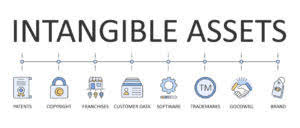Content

The classic application of the https://simple-accounting.org/small-business-guide-to-retail-accounting/ applies to the activities of securities traders. At the end of each trading day, the firm’s controllers value the securities held in trading desk inventories at their closing market prices. A net increase in value versus the prior trading day is a gain that is recognized immediately in the income statement, and which thus also increases retained earnings.
How do you calculate mark-to-market?
The MTM loss is equal to the change in the value of the contract, multiplied by the multiplier of 5000: $0.50 x 5,000 = $2,500. This amount will then be debited from your trading account. After the first day, your mark to market profit or loss is calculated by multiplying the daily change in price by the multiplier.
If the Treasury yield rate rose during the year, the accountant must mark down the value of the notes. The note that the bank holds doesn’t pay as much in interest as new notes. The values of Treasury notes are published in the financial press every business day. In the securities market, fair value accounting is used to represent the current market value of the security rather than its book value. It is done by recording the prices and trades in an account or portfolio.
Build your skills with a risk-free demo account.
If the total value of the contract increased, it’ll add cash to your account. If the value of the futures contract declines too much, you may fall below the margin requirements set by your broker, which will force you to liquidate your position or add cash to your account. The hierarchy ranks the quality and reliability of information used to determine fair values, with level 1 inputs being the most reliable and level 3 inputs being the least reliable. A typical example of the latter is shares of a privately owned company the value of which is based on projected cash flows.
Is MTM accounting still allowed?
Suffice it to say, though mark-to-market accounting is an approved and legal method of accounting, it was one of the means that Enron used to hide its losses and appear in good financial health.
For financial derivative instruments, such as futures contracts, use marking to market. If the value of the security goes up on a given trading day, the trader who bought the security (the long position) collects money – equal to the security’s change in value – from the trader who sold the security (the short position). Conversely, if the value of the security goes down on a given trading day, the trader who sold the security collects money from the trader who bought the security.
Mark to Market Accounting
It incorporates the probability that the asset isn’t worth its original value. For a home mortgage, an accountant would look at the borrower’s credit score. If the score is low, there’s a higher chance the mortgage won’t be repaid.
A serious financial crisis, such as the Great Depression following the stock market crash of 1929 or the Great Recession of 2008, can lead businesses to mark down their assets, since these assets have, after all, lost value. For example, an individual with a stock portfolio worth $10 million does not actually have $10 million in cash under their name. Their net worth is an indicator of how much cash they would obtain if they liquidated their assets at that given moment. In a bull market with rising stock prices, their net worth may increase, and in a bear market with falling prices, their net worth will decrease. However, it’s important to realize that choosing to use mark-to-market accounting is not available to the average individual filing their taxes, and a day trader is not really a day trader according to the IRS unless they are approved as such.
“Taking Diversity Into Account”: Real effects of accounting measurement on asset allocation
After this, they would need to estimate the percentage of customers they believe will use the discount and then debit the contra revenue account, sales discount, and credit the contra asset account, allowance for sales discount. Another instance in which a company may use How to Do Accounting for Small Business: Basics of Accounting is when a company offers its customers discounts in an attempt to speed up collections of accounts receivables. When the fiscal year ends, the balance sheet for the company needs to show the current value for some accounts. The previous loss must settle first from the current gain to reflect the true and correct position in the accounts. Even when there is not contagion, we show that mark-to-market rules may cause banks to distort their portfolio and contract choices to ensure they remain solvent. But European politicians have much more leverage over the International Accounting Standards Board than Congress has over the Financial Accounting Standards Board, its U.S. counterpart.

